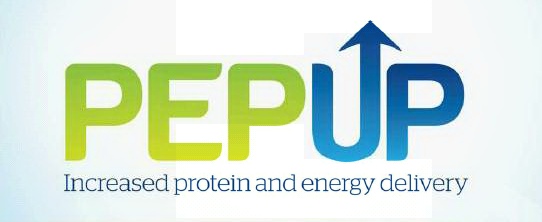
For the past decade or more, we have documented widespread iatrogenic underfeeding in intensive care unit (ICU) patients and that underfeeding was associated with worse clinical outcoms. Systematic barriers to adequately delivery of nutrition exist, many of which related to the initiation of feeds and use of a feeding protocol. Consequently, we developed a novel enteral feeding protocol designed to overcome the main barriers to adequate delivery of enteral nutrition, the Enhanced Protein-Energy Provision via the Enteral Route Feeding Protocol (PEP uP protocol). The key components of this feeding protocol include: 1) Starting feeds at the target rate based on increasing evidence that some patients tolerate starting nutrition at a higher rate of delivery and that slow start ups are not necessary. For patients who are hemodynamically stable, we propose to shift from an hourly rate target goal to a 24 hour volume goal and give nurses guidance on how to make up this volume if there was an interruption for non-gastrointestinal reasons. 2) For patients who are deemed unsuitable for high volume intragastric feeds, we provide an option to initiate ‘trophic feeds.’ Trophic feeds represent an idea to provide a low volume of a concentrated feeding solution for 24 hours or longer, designed to maintain gastrointestinal structure and function rather than meet their protein and caloric goals. This option should reduce the numbers of patients ordered to be kept NPO. Thus, PEP up patients may gain some of the benefit of early EN. 3) To optimize tolerance in the early phase of critical illness, we propose to use a semi elemental feeding solution instead of a standard polymeric solution. There is some evidence that these semi elemental solutions are better assimilated than polymeric solutions in the critical care setting. These solutions can be changed to a more traditional polymeric solution once the patient is tolerating adequate amounts of nutrition. 4) Rather than wait for a protein debt to accumulate because of inadequate delivery of EN, protein supplements are prescribed at initiation of EN and can be discontinued if EN is well tolerated and they are receiving all their protein requirements through their standard EN. This strategy guarantees that the patient will most likely receive all their protein requirements in the early phase of their critical illness. 5) Rather than wait for a problem with gastrointestinal tolerance to develop, we propose to start motility agents at the same time EN is started with a re-evaluation in the days following to see if it is necessary. By preventing delayed gastric emptying, which frequently occurs in this patient population, we can improve nutritional adequacy. 6) Based on emerging evidence that a higher gastric residual volume (the volume of feeds remaining in the stomach when the bedside nurse aspirates the feeding tube) is safe and perhaps results in greater nutritional adequacy, we will include a higher gastric residual volume of 300ml (Or more, up to 500ml) in our protocol. Since the bedside nurses initiate and utilize feeding protocols to achieve target goals, we need to couple this newer generational feeding protocol with a comprehensive nurse-directed nutritional educational intervention that will focus on its safe and effective implementation. When combined with a nursing educational intervention and compared to a standard feeding protocol, the PEP uP protocol resulted in 12-15% increase in the amount of protein and calories received by patients in the context of a cluster randomized multicenter trial. Over the past decade, we have worked with scores of ICUs around the world to implement the PEP uP protocol in the real world setting. Below, we have created a number of tools and strategies that will be helpful to sites trying to implement PEP uP protocol in their ICUs. We hope you will take the time to also learn about the initiative from PEP uP sites and read PEP uP publications.
PEP uP Discussion Group
Bedside Tools
Enteral Feeding Orders
Gastric Feeding Flowchart
Volume Based Feeding Schedule
Volume Based Feeding Calculations
Nurses' Guideline for the Management of Diarrhea
EN Guidelines for Surgical Procedures
PEP uP Pocket Guide
Bedside Nutrition Monitoring Tool
Information Sheets
Brochure
Information Sheet for Nurses
NIBBLES
Implementation Tools
Educational Video
Webinar May 2014
Posters
PowerPoints
Grand Rounds Presentation
Slideshow of PEP uP pointers
Self Learning Module
FAQs

